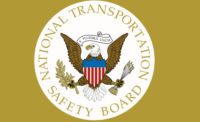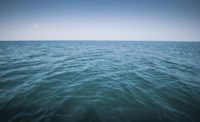Investigators from the National Transportation Safety Board (NTSB) and the U.S. Coast Guard and engineers from the U.S. Navy and Phoenix International will head to the Bahamas early next month in an effort to recover a voyage data recorder (VDR) that rests under 15,000 feet of water.
The VDR is from the cargo ship El Faro, a U.S. flagged cargo ship that sank during Hurricane Joaquin Oct. 1, 2015.
The July mission will be the latest chapter in a lengthy effort to find the ship and then determine the cause of its demise. The NTSB located the El Faro wreckage Nov. 1, 2015, but it took a second trip to locate the VDR on April 26, 2016.
What the underwater video showed
Video gained from remotely operated underwater vehicles during the initial search revealed the El Faro's navigation bridge structure and the deck below it had separated from the hull. The missing bridge structure included the mast and its base to which the voyage data recorder was mounted.
The navigation bridge was found Nov. 11, but searchers were not able to locate the mast or the VDR.
The NTSB announced Feb. 11, 2016, that it would launch a second search mission to locate the VDR and document the wreckage and debris field.
That effort succeeded in locating the VDR and completing video- and photo-documentation of the accident site. Shortly after the VDR was located, the NTSB announced that another mission to recover the VDR would be launched.
Obstacles and partnerships
After investigators collaborated in May with scientists and deep water recovery experts, to determine how the VDR could be recovered given its proximity to nearby obstacles, the NTSB contracted with the U.S. Navy Supervisor of Salvage to assist in the recovery effort.
The naval resources participating in the recovery effort include the USNS Apache and CURV-21, a remotely operated underwater vehicle. CURV-21 is the same equipment used to locate the El Faro wreckage in November.
Investigators from the NTSB and the U.S. Coast Guard, and engineers from the U.S. Navy and Phoenix International, the operator of CURV-21, will be aboard USNS Apache when it departs in early July for the accident site near the Bahamas.
The trip to the accident site is expected to take three to four days, followed by five days on scene to recover the VDR. After the VDR is recovered and USNS Apache returns to shore, the VDR will be brought to the NTSB laboratory here, where investigators will examine the VDR and download and analyze any information it may contain.
A fact sheet on the type of recorder that was on El Faro is available at: http://go.usa.gov/cuKW9


